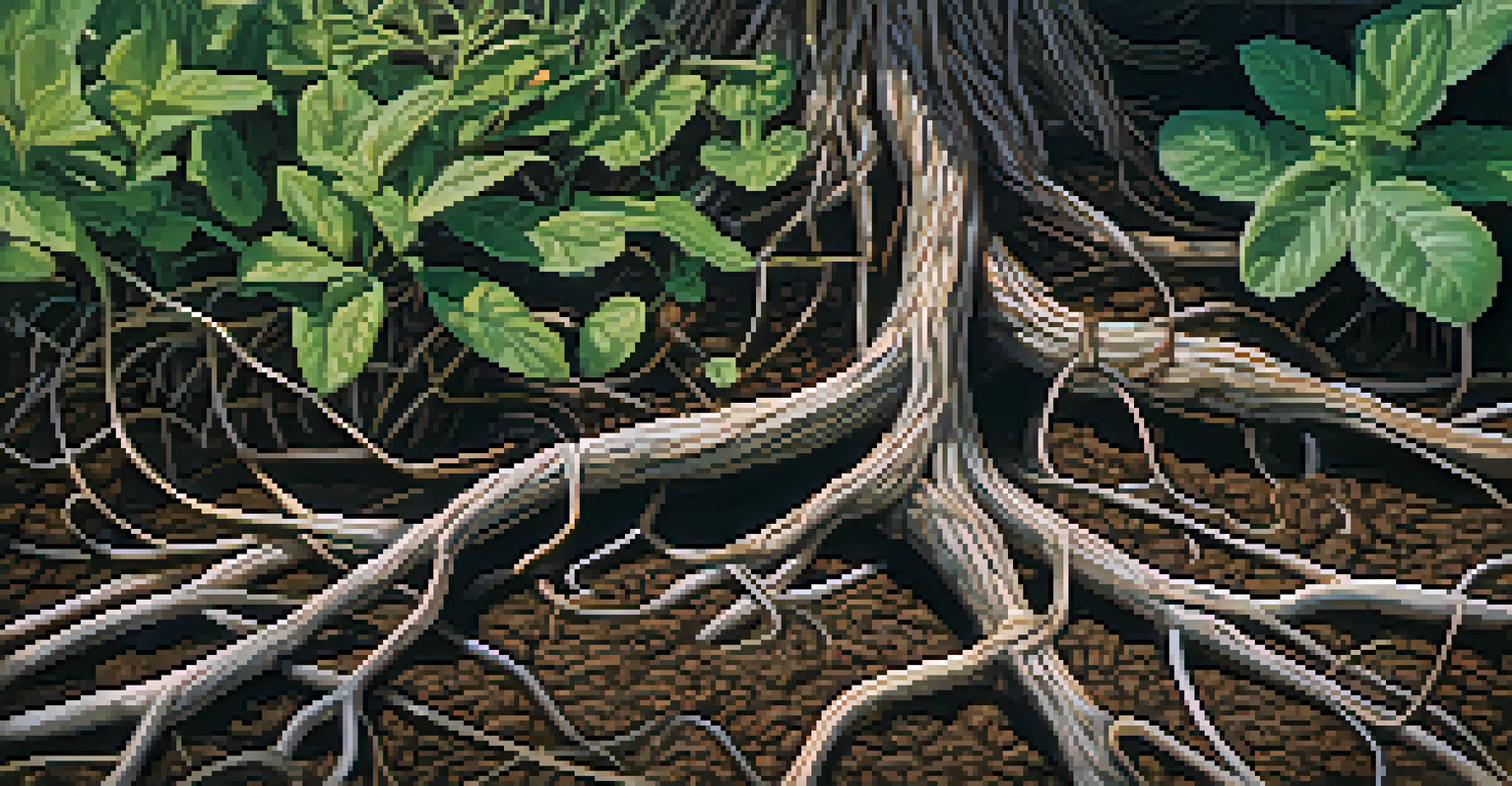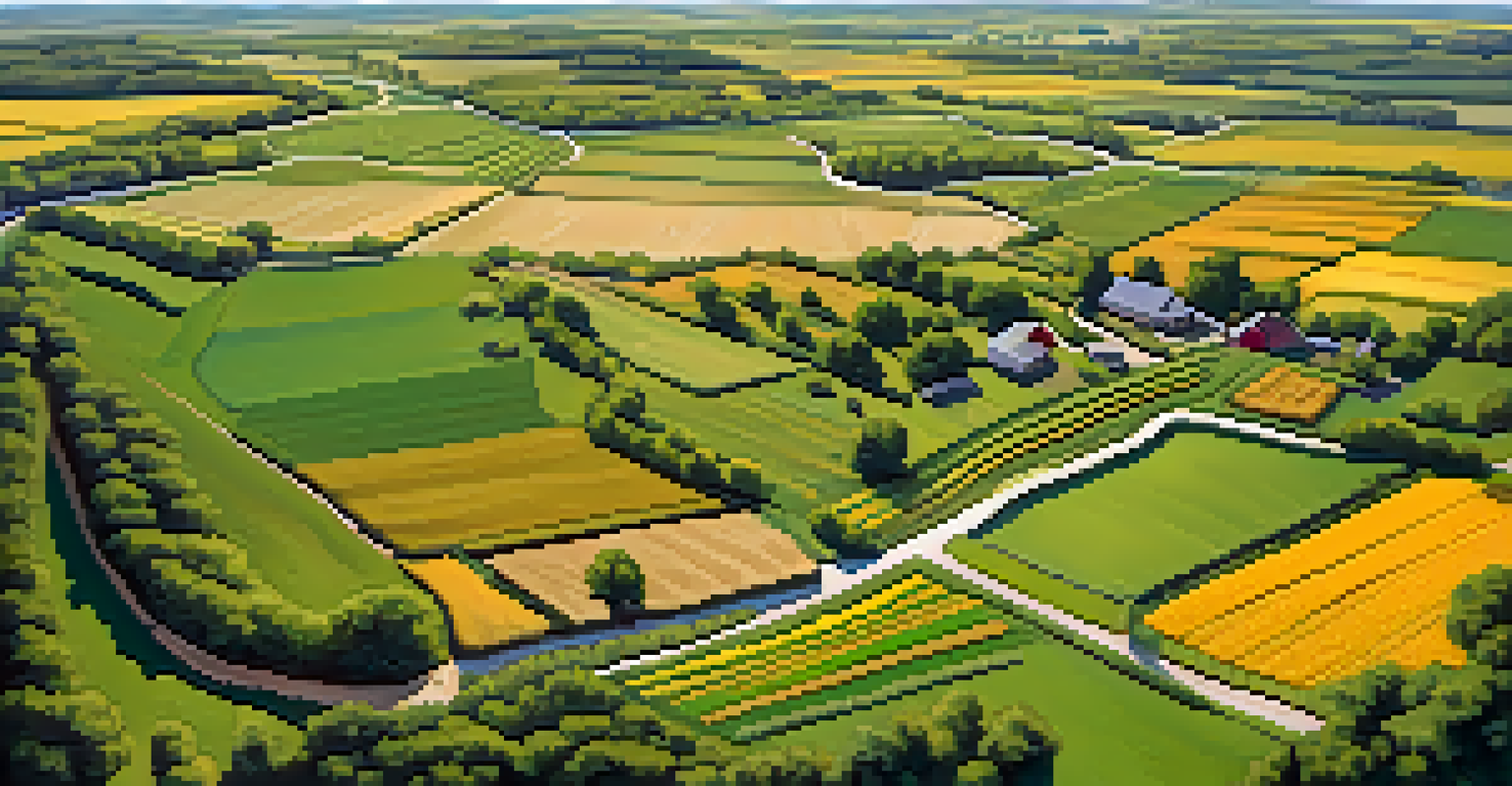Utilizing Native Plants in Sustainable Agriculture Systems

Understanding Native Plants and Their Benefits
Native plants are species that naturally occur in a specific region, adapted to local soil and climate conditions. This means they require less water and fewer chemical inputs, making them ideal for sustainable agriculture. By using native plants, farmers can create a more resilient ecosystem that supports local wildlife and biodiversity.
The native plants of any region are the best adapted to the local conditions, and they require the least amount of care and resources to thrive.
These plants typically have deep root systems, which help prevent soil erosion and improve water retention. This is crucial in promoting soil health, leading to better crop yields over time. Moreover, native plants can naturally repel pests, reducing the need for chemical pesticides that can harm beneficial insects.
Integrating native plants into agricultural systems isn't just beneficial for the environment; it also offers economic advantages. Farmers who adopt these practices may see reduced costs in water usage and pest control, ultimately improving their bottom line.
Enhancing Soil Health with Native Flora
Soil health is the foundation of any agricultural system, and native plants play a vital role in improving it. Their extensive root systems can break up compacted soil, allowing better aeration and water infiltration. This creates a more hospitable environment for beneficial microorganisms that enrich the soil.

Native plants also contribute organic matter through leaf litter and decaying roots, which enhances soil fertility. This natural process helps maintain nutrient levels without the need for synthetic fertilizers. By fostering a healthy soil ecosystem, farmers can cultivate crops that are more resilient to diseases and environmental stress.
Benefits of Native Plants in Farming
Native plants enhance soil health, reduce water usage, and promote biodiversity, making them ideal for sustainable agriculture.
Furthermore, healthier soil leads to improved water retention, reducing the need for irrigation. In regions facing water scarcity, this can be a game-changer for sustainable agricultural practices.
Promoting Biodiversity in Agricultural Landscapes
Integrating native plants into agricultural systems fosters biodiversity, which is essential for ecosystem balance. Diverse plant life attracts a variety of pollinators and beneficial insects, leading to better pollination and pest control. This natural synergy can significantly improve crop yields and quality.
Biodiversity is the foundation of healthy ecosystems, and native plants are essential for creating a balanced agricultural landscape.
Additionally, native plants provide habitat for wildlife, creating a balanced ecosystem that supports both agriculture and conservation efforts. For instance, birds and insects that thrive in these environments can help control pest populations without the need for chemical interventions.
Biodiversity also offers resilience against pests and diseases, reducing the likelihood of crop failure. By embracing native plants, farmers not only enhance their productivity but also contribute to the preservation of local ecosystems.
Water Conservation through Native Plant Use
Water scarcity is a pressing issue in many agricultural regions, and native plants can be a vital part of the solution. These plants are inherently adapted to local rainfall patterns, which means they require far less water than non-native species. This makes them ideal for dryland farming and regions facing water shortages.
By incorporating native plants into farming practices, farmers can create landscapes that retain moisture more effectively. The deep roots of these plants help to improve soil structure, allowing rainwater to penetrate deeper into the ground and reducing surface runoff.
Economic Advantages of Native Flora
Adopting native plants can lower costs related to water and pest management, ultimately boosting farmers' profitability.
This water conservation not only benefits crops but also contributes to the overall health of the watershed. By using native plants, farmers can play a crucial role in maintaining water quality and availability for future generations.
Native Plants as Cover Crops for Sustainable Practices
Cover crops are an essential component of sustainable agriculture, and many native plants can serve this purpose effectively. By planting native species during the off-season, farmers can protect soil from erosion, suppress weeds, and enhance soil quality. This practice also helps break the cycle of pests and diseases by interrupting their life cycles.
Native cover crops are particularly beneficial because they are adapted to local conditions and typically require less maintenance. This reduces the need for inputs such as water and fertilizers, making them a cost-effective choice for farmers.
Moreover, using native plants as cover crops encourages biodiversity in the agricultural landscape. This not only enhances ecosystem services but also supports the overall health of the farm.
The Role of Native Plants in Integrated Pest Management
Integrated Pest Management (IPM) is a holistic approach that combines various methods to control pests while minimizing environmental impact. Native plants play a crucial role in IPM by attracting beneficial insects that prey on common agricultural pests. This natural pest control method reduces dependence on chemical pesticides.
By creating diverse habitats with native plants, farmers can encourage a balanced ecosystem that supports natural predators. For instance, planting flowering native species can attract ladybugs and lacewings, both known for their pest control abilities. This not only promotes a healthier environment but also enhances crop resilience.
Challenges in Implementing Native Plants
Farmers face barriers such as limited access to native seeds and knowledge, necessitating education and collaboration for successful integration.
Additionally, native plants can act as a buffer against pests by providing alternative food sources. This helps protect crops from pest outbreaks and supports the overall sustainability of agricultural practices.
Challenges and Solutions in Implementing Native Plants
While the benefits of utilizing native plants in agriculture are clear, there are challenges to their implementation. Farmers may face obstacles such as limited access to native plant seeds or a lack of knowledge about suitable species for their specific region. Education and outreach are vital to overcoming these barriers.
Collaborative efforts between farmers, local governments, and conservation organizations can help provide resources and support for adopting native plants. Workshops, field days, and online resources can educate farmers about the best practices for integrating native species into their systems.

Additionally, financial incentives or grants may encourage farmers to explore native plant options. By addressing these challenges, we can pave the way for a more sustainable agricultural future.